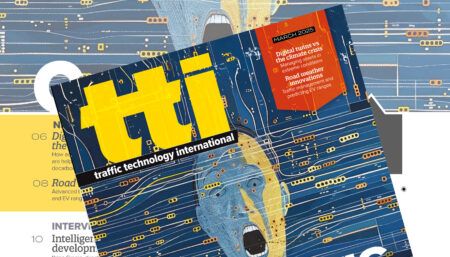Four of the USA’s leading road safety organizations have filed a petition with the National Highway Traffic Safety Administration (NHTSA) requesting that the agency initiates rulemaking to require forward collision avoidance and mitigation braking (F-CAM) systems on all new large trucks and buses with a gross vehicle weight rating (GVWR) of 10,000lbs (4.5 tonnes) or more. F-CAM technology uses radar and sensors to first alert the driver and then to apply the brakes when a crash is imminent. F-CAM systems employ a Forward Collision Warning (FCW) to alert a driver when their vehicle gets too close to another vehicle that is stopped or traveling more slowly in front of them, giving the driver a chance to brake. When the system determines that a crash is about to occur, a Collision Mitigation Braking (CMB) system automatically applies the brakes to avoid the crash or reduce its severity. The NHTSA estimates that current generation F-CAM systems can prevent over 2,500 crashes each year and future generation systems could prevent over 6,300 crashes annually. However, the agency has not yet decided to move ahead to make the technology a statutory requirement.
Advocates for Highway and Auto Safety, the Truck Safety Coalition, the Center for Auto Safety, and Road Safe America, all say that with total tonnage of truck freight shipments predicted to increase by as much as 63% by 2040, the need for F-CAM technology has never been greater. While most truck manufacturers currently offer some type of F-CAM system on new vehicles, there is no national standard for F-CAM system performance and not all buyers purchase the option. The group says few trucks are actually equipped with the technology, despite its availability, with only 3% of the more than three million standard tractor-trailers (Class 8) currently on the road, equipped with some form of F-CAM technology. The organizations note that Federal regulatory action has previously expedited the installation of critical vehicle safety advances, such as airbags and Electronic Stability Control (ESC) systems, by requiring the systems as standard equipment, rather than as expensive options.
“The safety technology is available to reduce the carnage on America’s roads resulting from rear-end crashes by large trucks,” said Henry Jasny, senior vice president of Advocates for Highway and Auto Safety. “The NHTSA can take action to improve safety and reduce preventable losses by requiring F-CAM technology on all large commercial motor vehicles.” John Lannen, executive director of the Truck Safety Coalition commented, “In work zone areas and when traffic is significantly slowed or at a complete stop, cars are particularly vulnerable to being rear ended by large trucks. Trucks are overrepresented in fatal highway crashes, and they are even more so in fatal work zone crashes. This is why it is imperative that F-CAM technology is required safety equipment in large trucks.”




